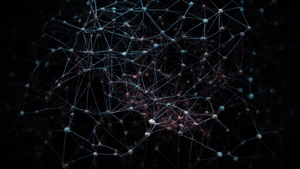Supervised Learning: Classification

What is Supervised Learning?
Supervised learning is a type of machine learning where the model is trained on a labeled dataset. The aim of supervised learning is to learn a mapping from input variables to output labels, based on the example input-output pairs provided in the training data. In classification tasks, the goal is to predict the categorical class label of new observations based on past observations with known labels.
Classification in Supervised Learning
Classification is a specific task within supervised learning that involves predicting the class or category of an observation. The output variable for classification problems consists of discrete categories (classes), and the goal is to learn a mapping from input features to these predefined classes.
Key Concepts in Supervised Learning Classification
Features: These are individual measurable properties or characteristics of the phenomenon being observed. They serve as inputs into our machine learning model.
Labels: Labels refer to the class or category that we are trying to predict using our model.
Training Data: This is a set of input-output pairs used to train the machine learning model. Each pair consists of feature values and their corresponding labels.
Model Training: During this phase, an algorithm learns patterns from the training data and creates a predictive model capable of mapping features to labels.
Model Evaluation: After training, we evaluate our model's performance on unseen data by checking its predictions against true labels not seen during training.
Algorithms Used in Classification Tasks
There are various algorithms used for solving classification problems:
Logistic Regression: A linear algorithm typically used for binary classification tasks.
Decision Trees: Tree-based models that recursively split data based on feature values.
Support Vector Machines (SVM): Effective for both linear and non-linear classification tasks by finding optimal decision boundaries.
K-Nearest Neighbors (KNN): Uses similarity measures between instances for prediction.
Random Forests: Ensembles of decision trees that improve accuracy and robustness through aggregation.
Applications of Supervised Learning Classification
Classification has numerous applications across industries:
- Email spam detection
- Image recognition
- Sentiment analysis
- Disease diagnosis
- Customer churn prediction
In conclusion, supervised learning classification plays a vital role in making predictions about categorical outcomes in diverse fields and drives many real-world applications by utilizing historical labeled data for training predictive models.
Sponsored
Sponsored
Sponsored
Explore More:

Model Evaluation and Selection
Topic model evaluation and selection are crucial steps in the process of building...

Feature Engineering
Feature engineering is the process of selecting, creating, and transforming features (inputs) in...

Natural Language Processing (NLP)
Natural Language Processing (NLP) is a subfield of artificial intelligence that focuses on...

Neural Networks and Deep Learning
Neural networks are a class of algorithms modeled after the human brain's neural...

Reinforcement Learning
Reinforcement learning is a branch of machine learning concerned with how intelligent agents...

Dimensionality Reduction: Autoencoders
Autoencoders are a type of artificial neural network used for learning efficient representations...

Dimensionality Reduction: Factor Analysis
Factor analysis is a powerful technique used in the field of machine learning...

Dimensionality Reduction: Independent Component Analysis (ICA)
Independent Component Analysis (ICA) is a dimensionality reduction technique commonly used in machine...

Dimensionality Reduction: t-Distributed Stochastic Neighbor Embedding (t-SNE)
Dimensionality reduction is a fundamental technique in machine learning and data visualization that...

Dimensionality Reduction: Principal Component Analysis (PCA)
Principal Component Analysis (PCA) is a popular dimensionality reduction technique used in machine...

Unsupervised Learning: Dimensionality Reduction
Unsupervised learning dimensionality reduction is a crucial concept in machine learning that deals...

Clustering: Gaussian Mixture Models
Clustering is a fundamental unsupervised learning technique used to identify inherent structures in...

Clustering: DBSCAN
DBSCAN (Density-Based Spatial Clustering of Applications with Noise) is a popular clustering algorithm...

Clustering: Hierarchical Clustering
Hierarchical clustering is a popular unsupervised machine learning technique used to group similar...

Clustering: K-Means
Clustering is an unsupervised machine learning technique that aims to partition a set...

Unsupervised Learning: Clustering
Unsupervised learning clustering is a fundamental concept in machine learning that involves identifying...